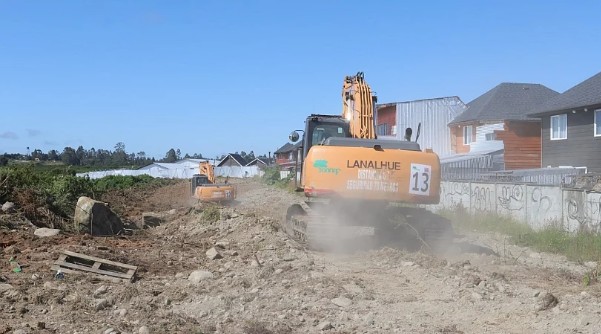Which are the 5 crops that require the most water for production and what is their environmental impact
Experts anticipate that the water crisis is a problem involving multiple factors. The agricultural industry influences this context in various ways.
Water is a vital component both for consumption and agricultural production.
However, according to a UNESCO report, 2 billion people worldwide lack access to safe drinking water.
This figure represents 26% of the global population.
Additionally, the global urban population suffering from water scarcity is projected to double, rising from 930 million in 2016 to between 1.7 and 2.4 billion by 2050.
"The increasing incidence of extreme and prolonged droughts is also stressing ecosystems, with dire consequences for plant and animal species," UNESCO states.
Various analysts have asserted that the water crisis is a problem involving multiple factors, including climate change.
An article by the United Nations (UN) states that this phenomenon "is accelerating both water scarcity and water-related hazards (such as floods and droughts), as rising temperatures disrupt precipitation patterns and the entire water cycle."
Agriculture also plays a significant role in this scenario.
A 2021 report by the Food and Agriculture Organization (FAO) estimated that "globally, agriculture accounts for 72% of all water withdrawals" for irrigation purposes.
However, the sector is also crucial for food security and providing employment to various communities.
FAO Water and Land Technician Patricia Mejías explained to the BBC that "agriculture is, on one hand, a creator of this problem of unsustainable water use."
"But on the other hand, it is a victim: when there is no water, food cannot be produced," the expert added.
In this regard, she emphasized that "we must not demonize crops for their water use without understanding the context."
Below is a list of the five crops that require the most water for production, along with their environmental impact.
1. Rice
Figures cited by the aforementioned source detail that between 2022 and 2023, 525.6 million metric tons of rice were produced.
This cereal requires large amounts of water.
The Water Footprint Network states, based on 2010-2019 data, that producing one kilogram of rice requires a global average of 1,144 liters of water.
However, it should be noted that this figure can vary depending on factors such as soil type, climate, and irrigation, among others.
The largest rice-producing countries are concentrated in Asia.
Data from the U.S. Department of Agriculture show that in the 2022-2023 period, China produced 144.62 million metric tons of rice.
India produced 137.83 million, Bangladesh 37 million, and Indonesia 33.02 million.
Asia also has the lowest per capita water availability in the world, according to the BBC.
The FAO predicts that global rice production will increase in the 2024-2025 period, reaching a record high of 537 million metric tons.
Abebe Chukalla, a researcher at the Delft Institute for Water Education, told the BBC that "what matters environmentally is not just the amount per ton (produced of a particular crop), but also the total quantity."
"Since rice is widely cultivated around the world, it is one of the crops that truly consumes a lot of water, with the consequent impact on the planet."
2. Sugarcane
The Water Footprint Network estimates that producing one kilogram of sugarcane requires a global average of 1,280 liters of water.
The FAO states that its production has "global volumes exceeding 1.5 billion metric tons since 2007, rising to over 1.9 billion metric tons in 2022."
This crop is the basis for refined sugar, which accounts for 85% of global production.
Brazil is the world's largest sugarcane producer, generating 38% of global production in 2022, according to the FAO.
In addition to exporting sugarcane itself, the country has developed an industry that uses this crop to produce ethanol biofuel.
The country has faced severe droughts that have fueled wildfires, which in turn have affected harvests.
Climate change has also contributed to flooding, such as that seen earlier this year.
According to data cited by the BBC, the agricultural sector accounts for nearly a quarter of Brazil's Gross Domestic Product (GDP).
Agronomist Fabio Vale Scarpare, who worked for years on research with the University of São Paulo, said that "the sugarcane industry is very concerned about this water issue."
In fact, the expert noted, the sector "has been working to reduce its water use."
3. Soybeans
Global soybean production is concentrated in Latin America and North America, with Brazil as the leading producer.
The South American country has over 43 million hectares dedicated to soybean cultivation, according to the cited source.
The U.S. and Argentina follow in second and third place, respectively.
These three countries account for 80% of global production.
According to the FAO, current production "stands at around 176.6 million metric tons across 75.5 million hectares."
The average global water footprint of soybeans is 1,600 liters per kilogram.
Similarly, 2011 estimates show that soybean biodiesel requires 11,400 liters of water per liter of fuel.
Expert Eduardo Assad told the BBC that the Cerrado region in central Brazil is one of the areas where this crop is grown and where the effects of drought are most noticeable.
He explained that "soybean and sugarcane production alone is not responsible for the increase in droughts."
"The expansion of productive areas, dependent on deforestation across large land tracts, is what has been causing the rise in water scarcity," the specialist emphasized.
4. Cotton
The Water Footprint Network estimates that the global average water footprint of cotton is 6,055 liters per kilogram.
Cotton cultivation, whether as raw or fiber, is concentrated mainly in India, which accounts for 25% of global production.
China follows with 22%, the U.S. with 15%, Brazil with 13%, and Pakistan with 4%.
The organization notes that fabric made from Indian cotton has a water footprint of 22,500 liters per kilogram.
In contrast, U.S. cotton fabric requires 8,100 liters per kilogram, and Chinese cotton fabric 6,000 liters per kilogram.
5. Avocado
Avocado production is significantly lower globally compared to crops like rice, sugarcane, soybeans, and cotton.
However, the Water Footprint Network estimates that it requires a global average of 938 liters of water per kilogram.
Additionally, specialists told the BBC that some growing regions face considerable water stress.
Mexico is the world's largest producer of this fruit, and in regions like Michoacán and Jalisco, the so-called "green gold" has come at a high cost for local communities.
Chile is not exempt from this situation. Although the country is not a major global avocado producer, it exports large quantities to Europe.
Ariel Muñoz, a specialist at the Institute of Geography of the Pontifical Catholic University of Valparaíso (PUCV), explained to the BBC that this fruit naturally grows in tropical and subtropical zones.
However, he noted that Petorca, in the Valparaíso Region, has a semi-arid to Mediterranean climate.
Muñoz added that this results in lower annual rainfall.
This also necessitates the use of irrigation systems for production.
Water scarcity is one of the main challenges in the area, which lacks glaciers or sufficient snow to compensate.
In the words of the PUCV expert, who has researched the intensive water use of avocado farming in the region: "There has been no drier period in Petorca than the last 14 years."
"Despite this, for years we continued granting water rights and expanding not just the avocado industry but agriculture in general, without prioritizing human use."
Source:La Tercera

















